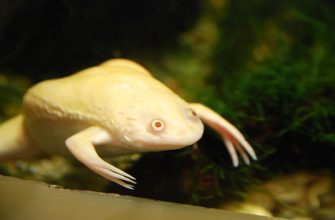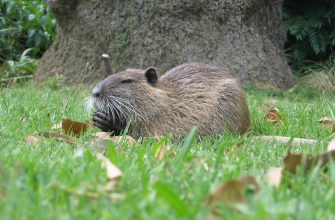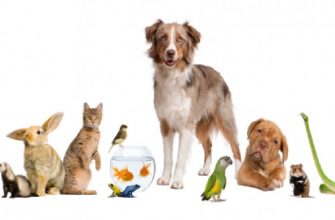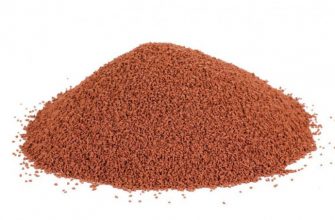The African Clawed Albino Frog is an amphibian with predatory habits that has gained aquarists’ sympathy due to its original appearance and modest care requirements. With the following tips and tricks, even people who have never cared for aquarium inhabitants before can create comfortable conditions for this frog.
What to consider when choosing an aquarium
– volume
When purchasing an aquarium for the frog, you need to take into account how many inhabitants are going to be accommodated in it.
It is not uncommon to settle a single frog in an aquarium. In that case 20 liters of water will be sufficient.
There is no need to fill the tank to the brim with water. The frog must still be able to float to the surface of water because it needs to breathe oxygen from air. The frog does not need land areas. It is best when the water level ranges from 20 to 25 centimeters, and the aquarium is filled to about a third.
The aquarium will be truly interesting and spectacular if a pair of frogs (male and female) live in it. The volume of water needs to be increased to 40 liters accordingly.
– lid availability
African Clawed Frogs are sedentary, but very shy. If aware of any danger, they start fussing, rushing around the aquarium. They can jump out of the aquarium if it remains open. This leads to the death of a frog due to drying out, since this species cannot exist out with water. Therefore, when arranging an aquarium for a frog, it is really necessary to provide a lid (with holes for ventilation). Or stretch a net, which also prevents a frog’s hopping away from the aquarium and allows air to pass through.
– water filtration system
African frogs are not known for their cleanliness. They leave lots of organic residues behinds so you must have a filter in the aquarium. You can install only an internal filter. If there is also an external one, then the water will have to be changed less often. However, having an external filter is optional. The main thing is to make sure that the frogs are kept in clean environment.
It is not recommended to get filters that are too powerful, because vibrations, water flow and bubbles can frighten the frogs and keep them stressed.
– light
Albino frogs don’t like bright light. It has a negative impact on their poor eyesight. If the light is strong and prolonged enough, frogs can go completely blind. Therefore, it is necessary to provide pets with an overhead, not very bright, light. There is no need to switch on the light above the aquarium when albino frogs have settled for the night.
Aquarium water requirements
Frogs feel comfortable in a water temperature that is not lower than 20°C, but not higher than 25°C. When the water temperature drops below 20°C, a heater will have to be used. By the way, it should not be forgotten that the water in the aquarium is also heated to some extend by the operation of filters.
It is recommended the water is changed every week. The aquarium does not need to be completely empty or the pet relocated. It is best to follow this simple algorithm:
-
Pour the water into a separate container to allow it to stand. (Chlorine is a danger to frogs.)
-
Wait a couple of days.
-
Pour out about one fifth of the aquarium water, and then add the same amount of prepared settled water.
Water quality should be closely monitored. If the water surface becomes oily, which often happens after feeding, you should change the water. Because it will prevent air (which frogs need to breathe) from entering the water.
When Albino frogs live in dirty water, they may suffer from nitrogenous compound poisoning, to which they are especially susceptible.
It is also recommended to add a special water conditioner (sold in pet stores), which will not harm the pets, but will eliminate dangerous substances for them.
What additionally to place into the aquarium
It is not enough just to buy the aquarium, provide it with a lid and install a filter. You also need to think about substrate, plants and, of course, frog shelters.
– aquarium substrate
There are two points to consider when choosing a substrate:
-
The substrate fractions should be large enough so that they do not fit in the frog’s mouth. Otherwise, they will be swallowed by the frog, which threatens not only its health, but also its life.
-
Only smooth matters should be used. For example, pebbles or gravel. Sharp edges are excluded. Otherwise, the frog’s skin will be damaged because it is so delicate and can be injured very easy.
The recommended thickness of the substrate layer is about 3 cm.
Sand as a substrate is not recommended – frogs will dig and stir it up, making the water in the aquarium turbid. Turbid, cloudy water causes an uncomfortable existence for the frog, and an inconvenience for the owner who wishes to observe the pet.
– plants
In an aquarium with African Clawed Albino Frogs, plants can also be placed. But it can’t be any random aquarium plants, because:
-
Not all plants are able to take root in coarse substrate fractions.
-
Frogs have rather sharp claws on their hind legs and teeth that they use to rip out plants, destroying the root system, preventing them from developing.
The aquarium with this type of frogs is suitable for plants that do not require rooting – water lettuce (Pistia), slender naiad (Najas Flexilis), tropical hornwort (Ceratophyllum submersum). It is also worth paying attention to anubias (Anubias barteri var. nana). It has rather stiff and dense leaves that are not easy for the frog to mess with and damage. This plant is convenient to plant in a pot, devising a cover for the roots to prevent the pet from getting access to them.
Other option to add living plants in the aquarium is to plant plants in pots that sit behind the aquarium while the leaves and stems are lowered into the aquarium water. As a result, the frogs do not damage the root system and the plant generally does not suffer.
The aquarium can be also decorated with aquarium plastic plants. In this case you also need to carefully approach your choice. It is better to buy artificial plants made from silk. Interacting with such decorations, frogs will definitely not damage their delicate skin. But if the quality of artificial plants is dubious, it is better to abandon them. When there is no certainty that decorations are made of safe materials, it is not worth experimenting with pets’ health.
– shelters
These frogs are not averse to creep to various hideouts or to get under driftwood. Shelters made of stones and shards would be suitable for them. The main thing is that entrance to a shelter should be wide enough. Sometimes a frog can get into the shelter easily, but cannot get out.
A great option is to build a shelter by putting tiles and the large stones together, making sure that the structure will not collapse and the frog will not hurt itself on the sharp edges.
Aquarium cleaning
Cleaning of the aquarium includes not only frequent and regular water changes. While maintaining water cleanliness, substrate must also be monitored. It is necessary to suction it regularly, removing frog faeces and getting rid of any uneaten food. Any garbage that accumulates in the substrate leads to diseases of frogs, which significantly reduce their lifespan.
In addition, the aquarium glass needs to be washed, in particular, to get rid of a film of limescale or other water components. The condition of a filter and plants should also be monitored.
General cleaning of the frog aquarium is recommended to be carried out approximately once every two weeks.
The African Clawed Albino Frogs are quite unpretentious creatures. If these simple guidelines are followed, frogs can happily live up to 15 years as pets.







